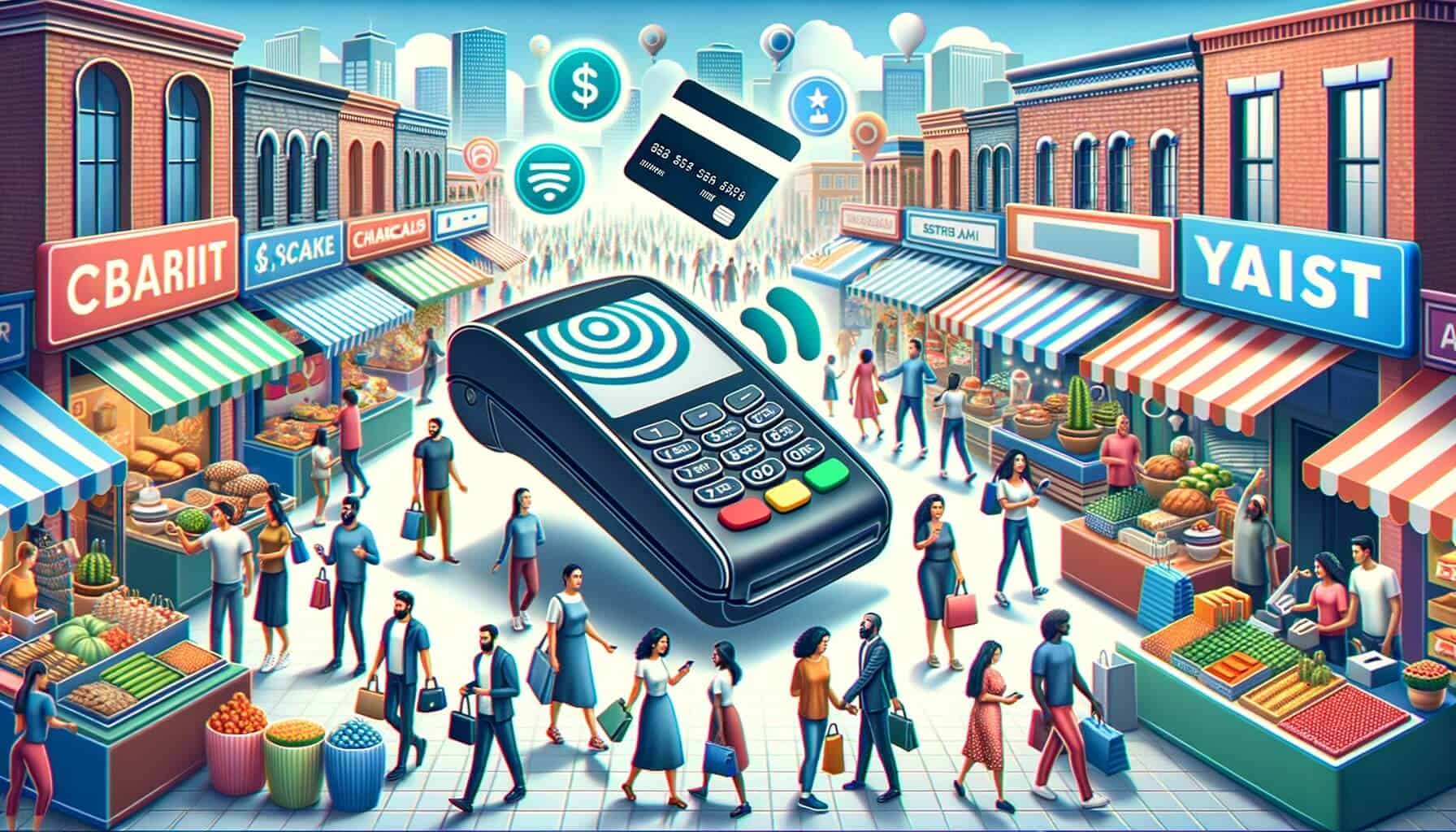
By Catharine Proctor January 29, 2025
In today’s fast-paced world, where time is of the essence, contactless payment terminals have emerged as a game-changer in the realm of financial transactions. These terminals allow customers to make payments swiftly and securely by simply tapping their cards or mobile devices on the terminal.
This article explores the various advantages of contactless payment terminals for businesses, the enhanced security features they offer, the increased convenience and efficiency they bring, and their potential impact on the future of retail and other industries.
How Contactless Payment Terminals Work
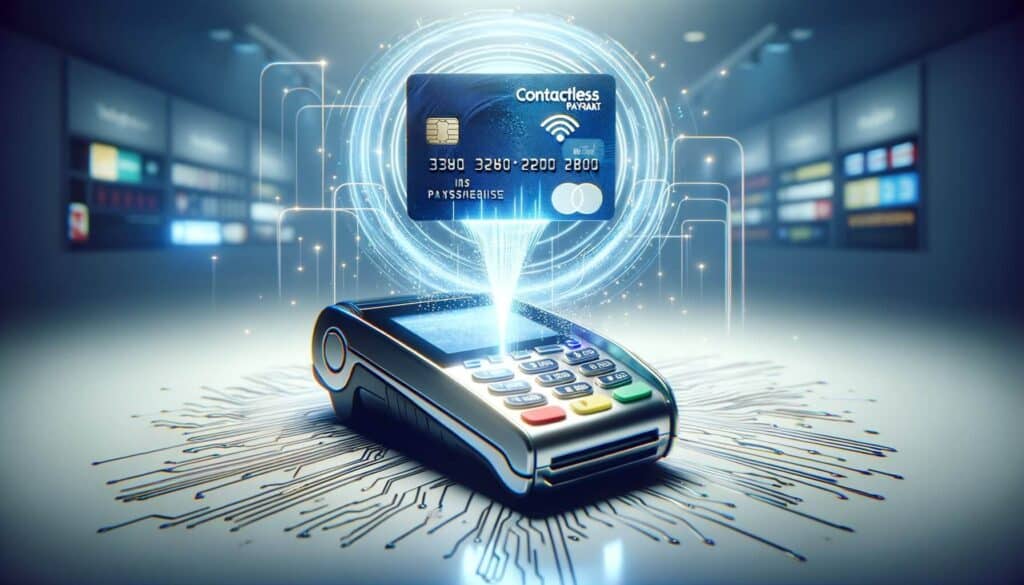
Contactless payment terminals utilize near-field communication (NFC) technology to facilitate seamless transactions. When a customer taps their contactless-enabled card or mobile device on the terminal, the NFC chip within the card or device communicates with the terminal, initiating the payment process.
The terminal then securely transmits the payment information to the payment processor, which completes the transaction in a matter of seconds. This technology eliminates the need for physical contact or the insertion of cards, making it a faster and more convenient alternative to traditional payment methods.
Advantages of Contactless Payment Terminals for Businesses
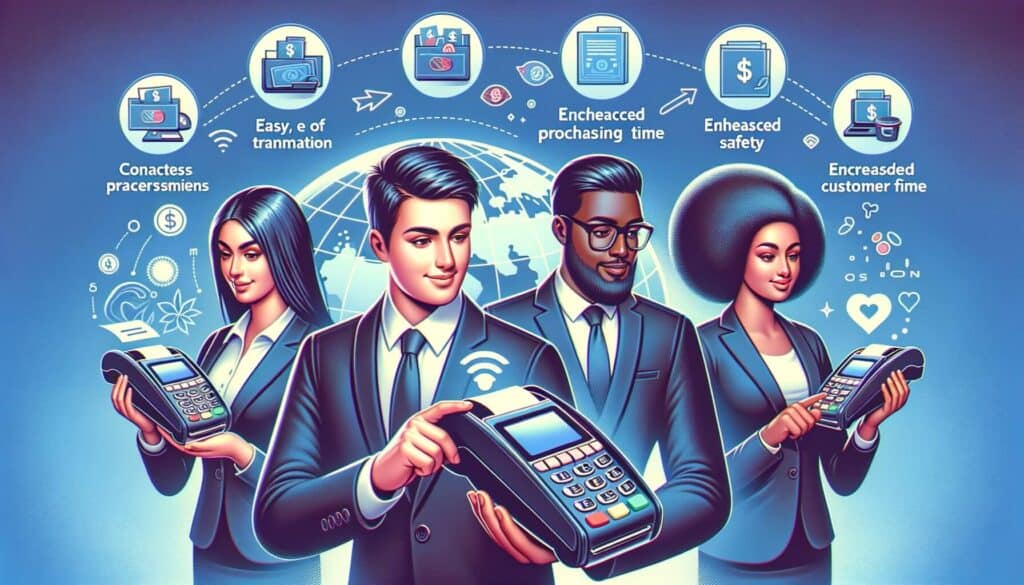
1. Speed and Efficiency: Contactless payments are significantly faster than traditional payment methods, reducing transaction times by up to 63%. This speed allows businesses to serve more customers in less time, resulting in increased customer satisfaction and improved operational efficiency.
2. Enhanced Customer Experience: Contactless payments offer a seamless and frictionless experience for customers. With a simple tap, they can complete their transactions swiftly, avoiding the hassle of handling cash or inserting cards. This convenience enhances the overall customer experience, leading to increased loyalty and repeat business.
3. Increased Sales: Contactless payment terminals have been shown to boost sales for businesses. Studies have revealed that customers tend to spend more when using contactless payments compared to cash transactions. The ease and speed of contactless payments encourage impulse purchases and reduce the likelihood of customers abandoning their purchases due to long queues or complicated payment processes.
4. Reduced Costs: Contactless payment terminals can help businesses reduce costs associated with cash handling and processing. By encouraging customers to use contactless payments, businesses can minimize the need for cash registers, cash handling equipment, and the time-consuming task of counting and reconciling cash at the end of each day.
5. Access to Valuable Data: Contactless payment terminals provide businesses with valuable insights into customer behavior and preferences. By analyzing transaction data, businesses can gain a deeper understanding of their customers’ purchasing patterns, enabling them to tailor their marketing strategies and product offerings accordingly.
Enhanced Security Features of Contactless Payment Terminals
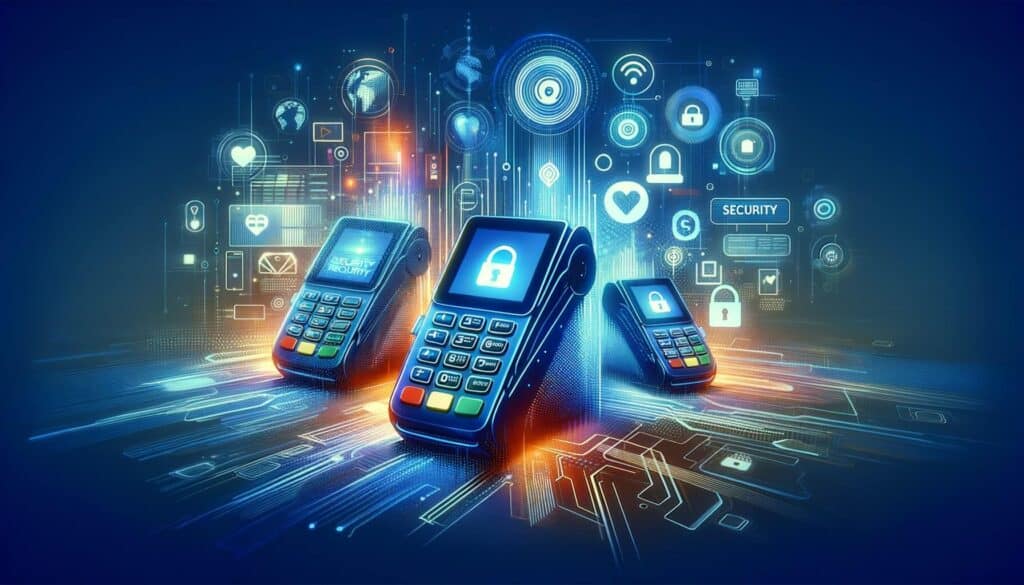
Contactless payment terminals offer robust security features that protect both businesses and customers from fraudulent activities. These features include:
1. Tokenization: Contactless payments use tokenization, a process that replaces sensitive card information with a unique token. This token is used for the transaction, ensuring that the customer’s card details are never exposed, reducing the risk of data breaches.
2. Encryption: Contactless payment terminals encrypt the payment data during transmission, making it virtually impossible for hackers to intercept and decipher the information.
3. Fraud Detection: Contactless payment terminals employ advanced fraud detection mechanisms to identify and prevent fraudulent transactions. These systems analyze transaction patterns and employ machine learning algorithms to detect suspicious activities in real-time, providing an additional layer of security.
4. Authentication: Contactless payments often require additional authentication methods, such as biometric verification or PIN entry, to ensure the rightful owner of the card or device is making the payment. This added layer of security minimizes the risk of unauthorized transactions.
Increased Convenience and Efficiency with Contactless Payments
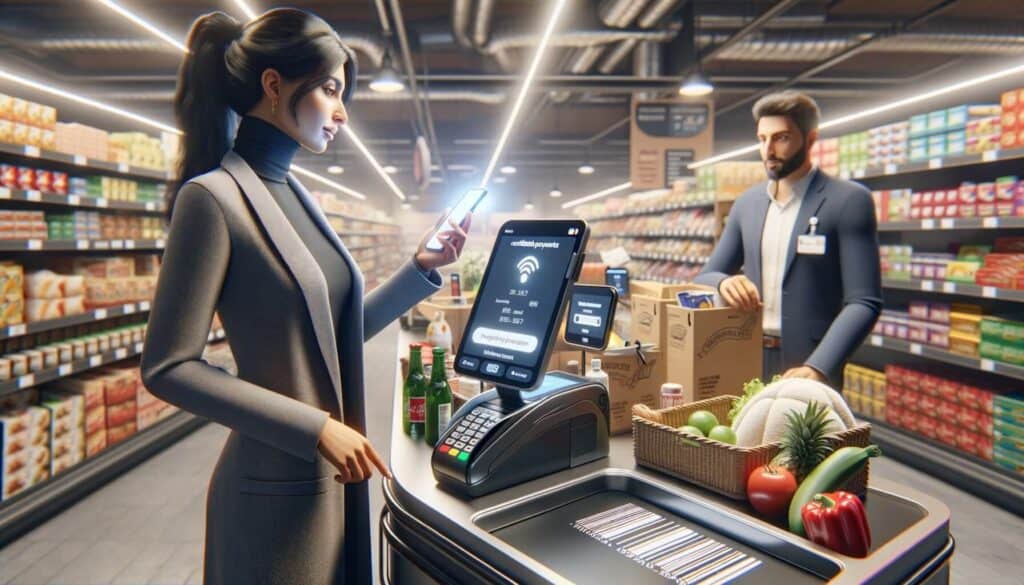
Contactless payment terminals offer numerous benefits in terms of convenience and efficiency for both businesses and customers.
1. Quick and Easy Transactions: With contactless payments, customers can complete transactions in a matter of seconds, eliminating the need to fumble for cash or insert cards. This speed not only saves time but also reduces queues, enhancing the overall customer experience.
2. Reduced Need for Cash Handling: Contactless payments reduce the reliance on cash, eliminating the need for businesses to handle and store physical currency. This reduces the risk of theft and human error associated with cash handling, streamlining operations and improving efficiency.
3. Seamless Integration with Mobile Wallets: Contactless payment terminals seamlessly integrate with popular mobile wallet applications, such as Apple Pay and Google Pay. This integration allows customers to make payments using their smartphones, further enhancing convenience and reducing the need to carry physical cards.
4. Contactless Payments for Small Transactions: Contactless payments are particularly beneficial for small transactions, as they eliminate the need for customers to carry loose change. This convenience encourages customers to make small purchases without the hassle of counting coins or waiting for change.
Contactless Payment Terminals and the Future of Retail
The adoption of contactless payment terminals has the potential to revolutionize the retail industry in several ways.
1. Improved Customer Experience: Contactless payments offer a seamless and frictionless experience for customers, aligning with the growing demand for convenience and speed. By embracing this technology, retailers can enhance the overall customer experience, leading to increased customer loyalty and satisfaction.
2. Omnichannel Integration: Contactless payment terminals can be seamlessly integrated into various sales channels, including brick-and-mortar stores, e-commerce platforms, and mobile applications. This integration allows retailers to provide a consistent and unified payment experience across all channels, catering to the evolving needs of modern consumers.
3. Personalized Marketing Opportunities: Contactless payment terminals provide retailers with valuable transaction data that can be leveraged to personalize marketing efforts. By analyzing customer purchasing patterns, retailers can tailor their promotions and offers to specific customer segments, increasing the effectiveness of their marketing campaigns.
4. Reduced Friction in Checkout Processes: Contactless payments eliminate the need for customers to wait in long queues or handle cash, reducing friction in the checkout process. This streamlined experience not only improves customer satisfaction but also increases the likelihood of completing the purchase, reducing cart abandonment rates.
Integrating Contactless Payment Terminals into Various Industries
Contactless payment terminals are not limited to the retail industry; they can be seamlessly integrated into various sectors, including:
1. Hospitality: Contactless payment terminals enable hotels, restaurants, and cafes to offer a seamless payment experience to their guests. By reducing transaction times and eliminating the need for physical contact, these terminals enhance the overall dining experience and improve operational efficiency.
2. Transportation: Contactless payment terminals can be integrated into public transportation systems, allowing commuters to pay for their fares with a simple tap of their cards or mobile devices. This integration reduces the reliance on physical tickets and cash, streamlining the ticketing process and improving passenger flow.
3. Healthcare: Contactless payment terminals can be utilized in healthcare settings, enabling patients to make payments for medical services quickly and securely. This integration reduces administrative burdens, improves billing accuracy, and enhances the overall patient experience.
4. Events and Entertainment: Contactless payment terminals can be deployed at concerts, festivals, and sporting events, allowing attendees to make payments for food, beverages, and merchandise effortlessly. This integration eliminates the need for cash transactions, reducing queues and enhancing the overall event experience.
Step-by-Step Guide to Setting Up Contactless Payment Terminals
Setting up contactless payment terminals involves several steps to ensure a smooth and successful implementation. Follow this step-by-step guide to get started:
1. Research and Choose a Provider: Begin by researching different contactless payment terminal providers and selecting one that aligns with your business needs. Consider factors such as pricing, customer support, and compatibility with your existing systems.
2. Assess Hardware Requirements: Determine the hardware requirements for your business, including the number of terminals needed, their placement, and any additional accessories required, such as stands or mounts.
3. Select the Right Terminal: Choose a contactless payment terminal that suits your business requirements. Consider factors such as terminal type (countertop, portable, or mobile), connectivity options (Wi-Fi, Bluetooth, or Ethernet), and compatibility with various payment methods.
4. Ensure Compliance: Ensure that your chosen contactless payment terminal complies with industry standards and regulations, such as Payment Card Industry Data Security Standard (PCI DSS) requirements. Compliance is crucial to protect customer data and maintain trust.
5. Establish Merchant Account: Set up a merchant account with a payment processor or acquiring bank to enable the acceptance of contactless payments. Ensure that the account is compatible with your chosen contactless payment terminal.
6. Install and Configure Terminals: Install the contactless payment terminals at your business premises, following the manufacturer’s instructions. Configure the terminals with the necessary settings, such as currency, tax rates, and receipt preferences.
7. Train Staff: Provide comprehensive training to your staff on how to operate the contactless payment terminals, including processing payments, handling refunds, and troubleshooting common issues. Ensure they are familiar with the security features and best practices to protect customer data.
8. Test and Go Live: Conduct thorough testing of the contactless payment terminals to ensure they are functioning correctly. Perform test transactions using different payment methods to verify the system’s reliability. Once satisfied, go live and start accepting contactless payments from customers.
Common Concerns and FAQs about Contactless Payment Terminals
Q1. Is contactless payment secure?
Yes, contactless payment terminals employ robust security features, such as tokenization, encryption, and fraud detection mechanisms, to ensure secure transactions. The risk of fraud is significantly reduced compared to traditional payment methods.
Q2. Can contactless payments be made with mobile devices?
Yes, contactless payments can be made using mobile devices that support NFC technology, such as smartphones and smartwatches. Mobile wallet applications, such as Apple Pay and Google Pay, enable users to store their payment information securely and make contactless payments.
Q3. What happens if a contactless payment fails?
If a contactless payment fails, customers can try again by tapping their card or device on the terminal. If the issue persists, alternative payment methods, such as chip and PIN, can be used. Contactless payment failures are rare and are usually resolved quickly.
Q4. Can contactless payment terminals be integrated with existing POS systems?
Yes, contactless payment terminals can be integrated with existing point-of-sale (POS) systems, allowing businesses to streamline their operations and consolidate transaction data. Integration options may vary depending on the specific POS system and contactless payment terminal provider.
Q5. Are there any transaction limits for contactless payments?
Transaction limits for contactless payments vary depending on the country, card issuer, and payment terminal. In many cases, there are limits for individual transactions, typically ranging from $25 to $100, to prevent unauthorized use. However, customers can make multiple contactless transactions up to a cumulative limit before requiring additional authentication.
Conclusion
Contactless payment terminals have revolutionized the way we pay, offering businesses and customers numerous benefits. The speed, convenience, and enhanced security features of contactless payments have made them increasingly popular in various industries. Businesses can enjoy increased sales, reduced costs, and access to valuable customer data, while customers benefit from a seamless and frictionless payment experience.
As the future of retail and other industries continues to evolve, contactless payment terminals will play a pivotal role in shaping the way we conduct financial transactions. Embracing this technology is not only a smart business move but also a step towards meeting the evolving needs and expectations of modern consumers.